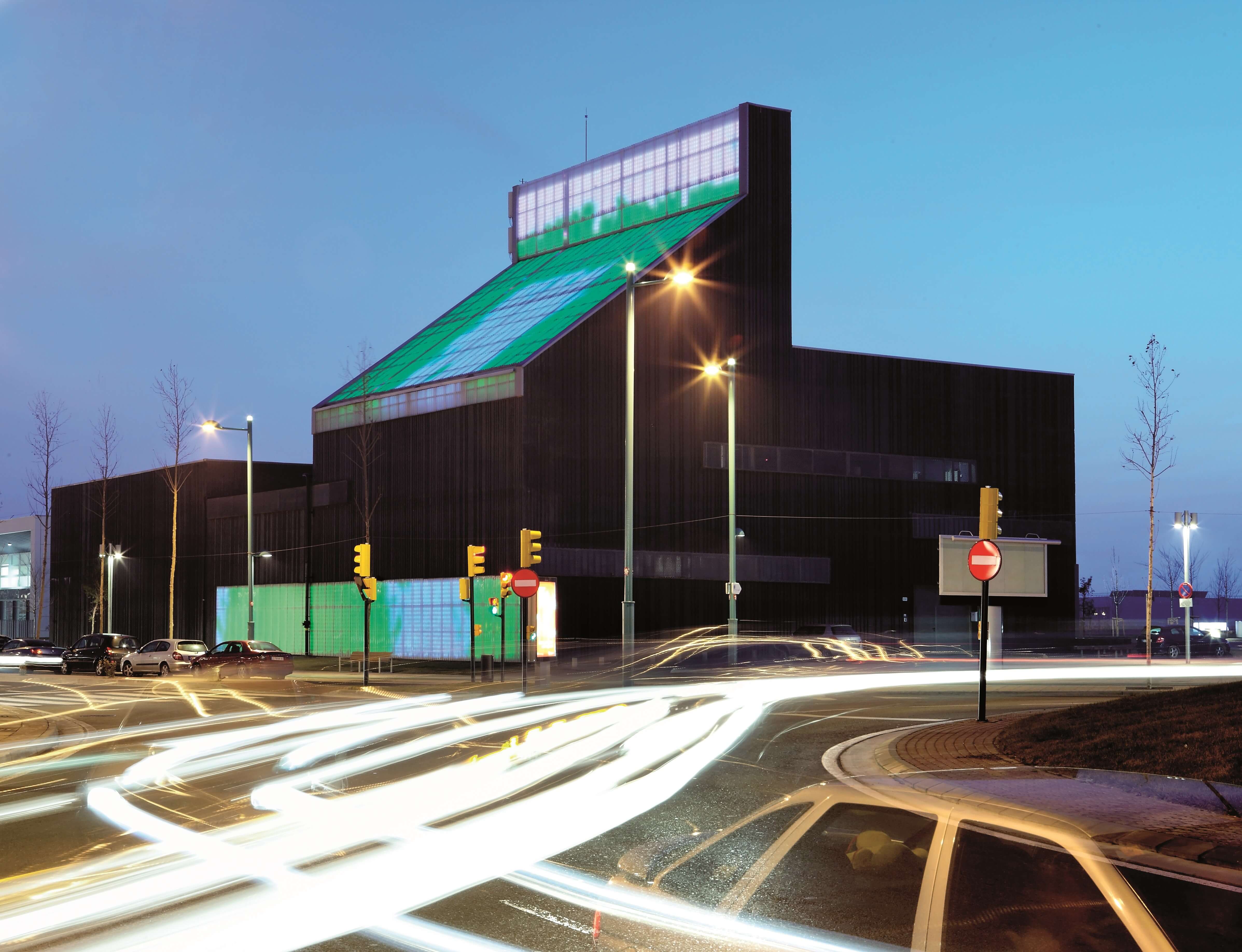Technological developments have led to considerable advances in the architectural sector in construction of projects for the future. Smart buildings create cities that include the essential concepts of usability, security and accessibility, which benefit not only individuals, but also the environment.
In this context, supported by the 2030 Sustainable Development Agenda and its Goals, or SDGs, the architectural sector is tackling the challenge of the major threats facing the whole planet. It also aims to achieve sustainability. As a result, many countries such as India, the USA and Spain can boast architectural professionals whose chief concerns are to find solutions that will make urban homes and buildings more efficient spaces.
So, what are the main aims of a Smart Building and how are smart architectural projects created? In today’s blog, we look at the most significant aspects of smart buildings for the architectural sector. Because it is important to understand how they work and how they can be applied to every project.
The key features of Smart Building projects
Smart Buildings are the future of our cities. Basically, they are buildings that use new technology such as the IoT (internet of things), from the project design stage. In this way they can improve energy efficiency, usability and accessibility.
These objectives apply to building construction of all kinds, both private and public, and for new builds and renovations. Consequently, architects and constructors must understand these concepts and apply them. Their commitment is essential as part of the international Agenda for Sustainable Development. Therefore, the principle feature of a Smart Building is its automated management and control.
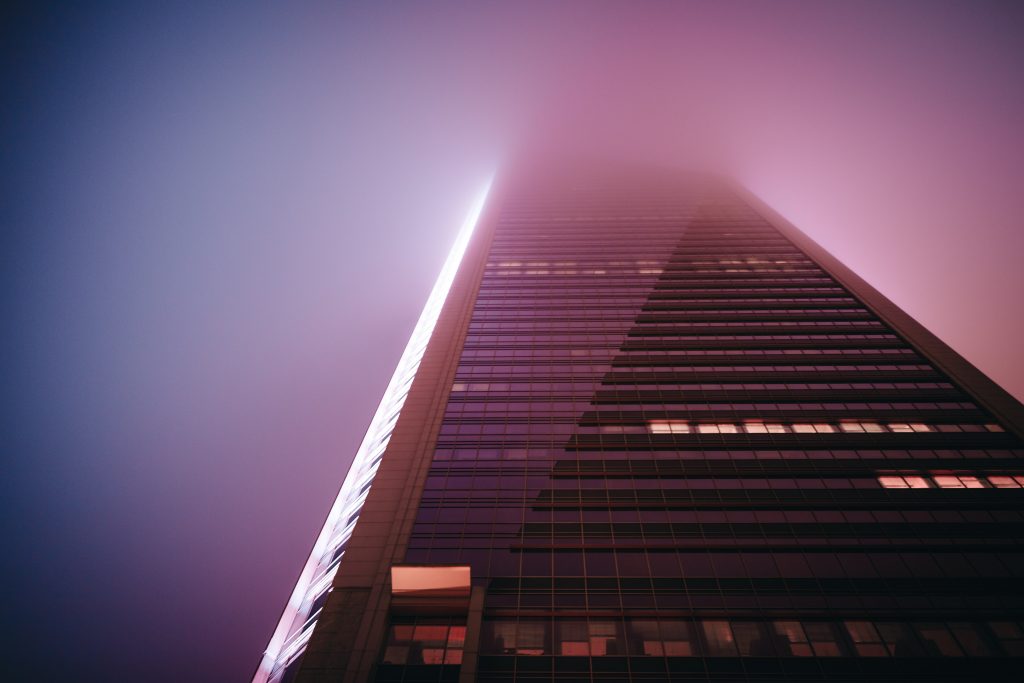
Illustration 2Photo by Wes Hicks,on Unsplash / Duke Energy Center, North Carolina
Operation of a Smart Building
The concepts of Inmotics and domotics embrace a whole set of technological applications. They create buildings that are more sustainable and efficient. On one hand, Inmotics refers to non-residential buildings. However, domotics deals with automating private homes. Both these systems will connect to a power grid through sensors, actuators and other control systems.
Solutions to create smart buildings
When creating new projects, including housing and other buildings, the design will need to consider four areas of activity that apply new technologies.
Firstly, In terms of economics, the building is required to use energy saving systems to help reduce carbon emissions. However, they should also reduce maintenance costs. This could be achieved by installing renewable energies such as solar panels. Another option when refurbishing buildings would be the inclusion of thermal insulation systems.
In environmental terms, a smart building should have areas dedicated to nature. An example might be landscaped gardens, as well as the renewable energies outlined above. Similarly, flowing water collection systems that could be integrated with the irrigation system would be an excellent solution in any Smart Building project.
As to technology, a smart building integrates all its control systems in one platform. This enables collection of data which can be used by Big Data and Machine Learning. In this way, new improvements can be introduced while also complying with the 2030 Agenda goals.
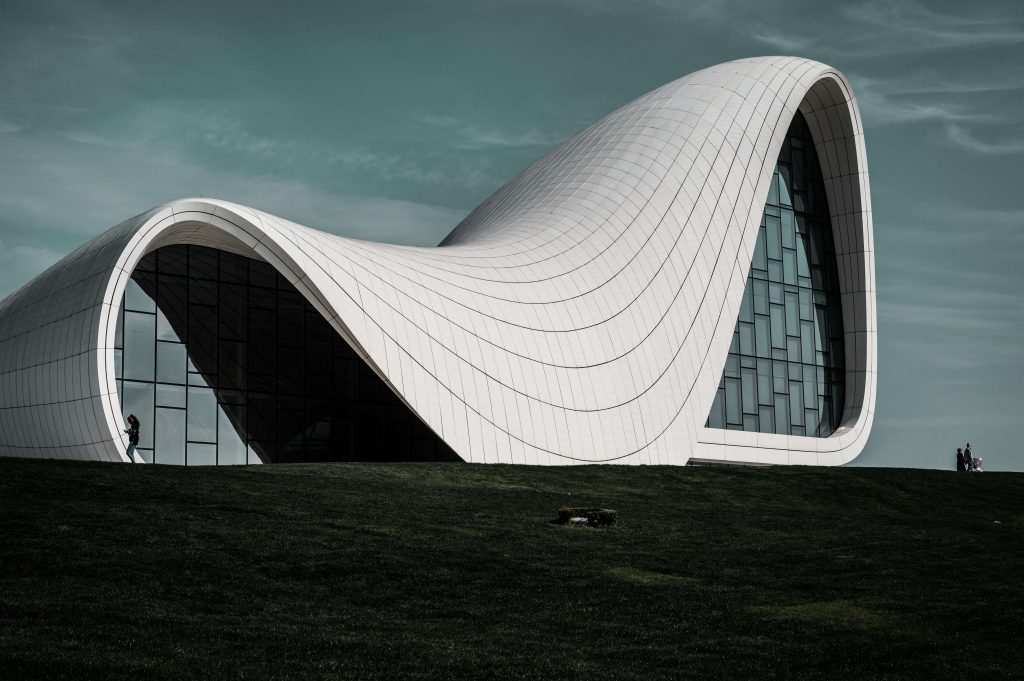
Illustration 3 Photo by Teymur Mammadov on Unsplash – Heydar Aliyev Centre / Zaha Hadid
Lastly, in architectural terms, a Smart Building must be user-friendly, secure and functional so that it guarantees the comfort of the people using the space. We must not forget that a smart building should be architecturally oriented towards flexibility, with the objective of integrating future technological advances. In addition, the importance of integrating the building with the surrounding area, so characteristic of projects such as those of Zaha Hadid, is a fundamental principle to adhere to in order for the project to have total commitment to the environment.
Smart Building projects around the world
To demonstrate how technological solutions can be integrated in practical ways, we’ll focus on some examples of buildings that are already using new technologies to design projects and construct the cities of the future.
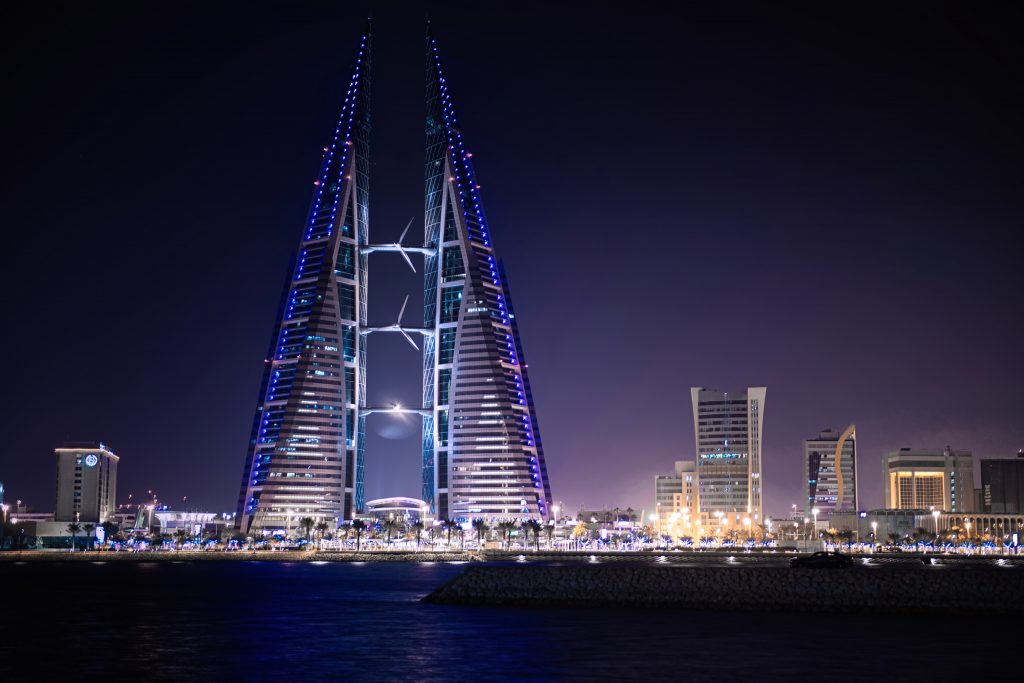
Illustration 4 Photo by Todd Gardner on Unsplash
The Bahrain World Trade Center
The Bahrain World Trade Center is one of Bahrain’s tallest buildings. It is significant for being the first skyscraper to integrate wind turbines into its design, something that is rare in urban buildings because of the complexity of installation. The turbines form a spectacular part of the city’s landscape as well as establishing the generation of renewable energies as an important environmental commitment. This building is strategically north-facing, channelling the air flow with three turbines that are attached with walkways. Its significance lies in the quantity of renewable energy created; it supplies 15% of the energy needs of both towers.
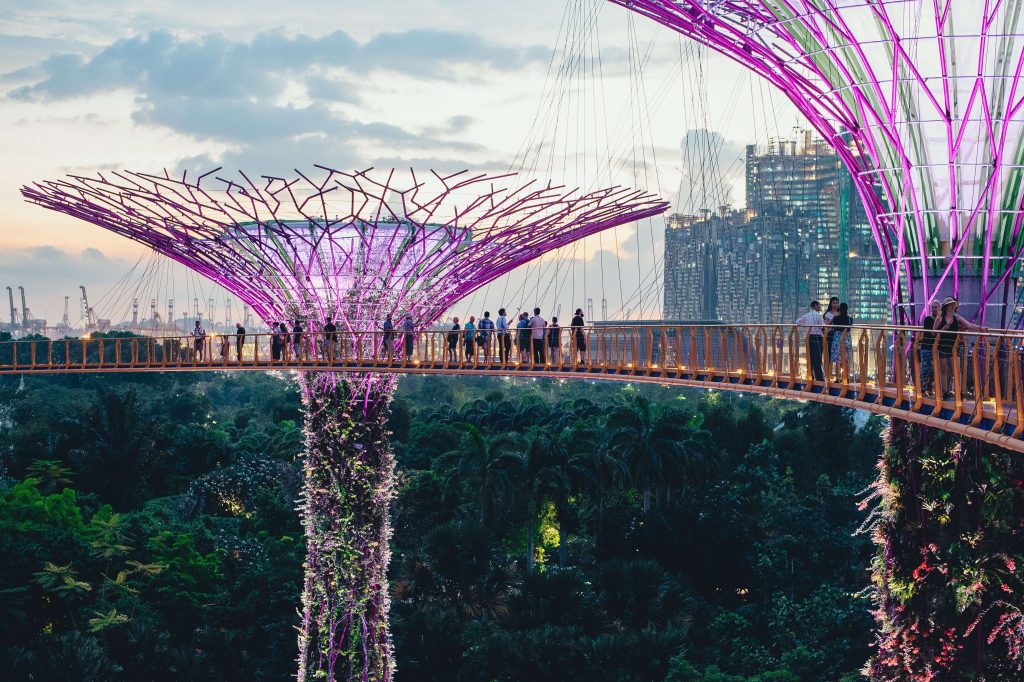
Illustration 5 Photo by Annie Spratt on Unsplash / Supertree Grove
Supertree Grove
Supertree Grove is located in the centre of Singapore and is an excellent example of the integration of the latest technology into a public space. It is a place that opts for human sustainability via a unique experience. Its commitment to the environment is exemplified through its imposing iron structures covered in foliage, which collect rainwater and use photovoltaic cells. This energy is used to power the installation’s nocturnal lighting that attracts and evokes an emotional response. In addition to solar energy, this urban space includes greenhouses that utilise residual heat through the use of a steam turbine that runs on Singapore’s horticultural waste.
Duke Energy Center
Duke Energy Center is a skyscraper located in Charlotte, North Carolina, USA. The environmental commitment of this architectural project, from design to construction, has been recognised with a platinum LEED certification. This imposing urban building includes plumbing appliances that reduce water usage. The refrigeration system of the building is filled using harvested rainwater. It also has a rooftop garden that reduces the building’s heating and air conditioning needs, blinds that makeuse of daylight, moving automatically with the angle of the sun, as well as electric vehicle charging stations.
Without doubt, these examples demonstrate that we are getting ever closer to the creation of efficient cities and buildings. Structures that are user-friendly, secure and functional. Architectural projects that look towards a sustainable future that promotes the wellbeing of people and the planet.

